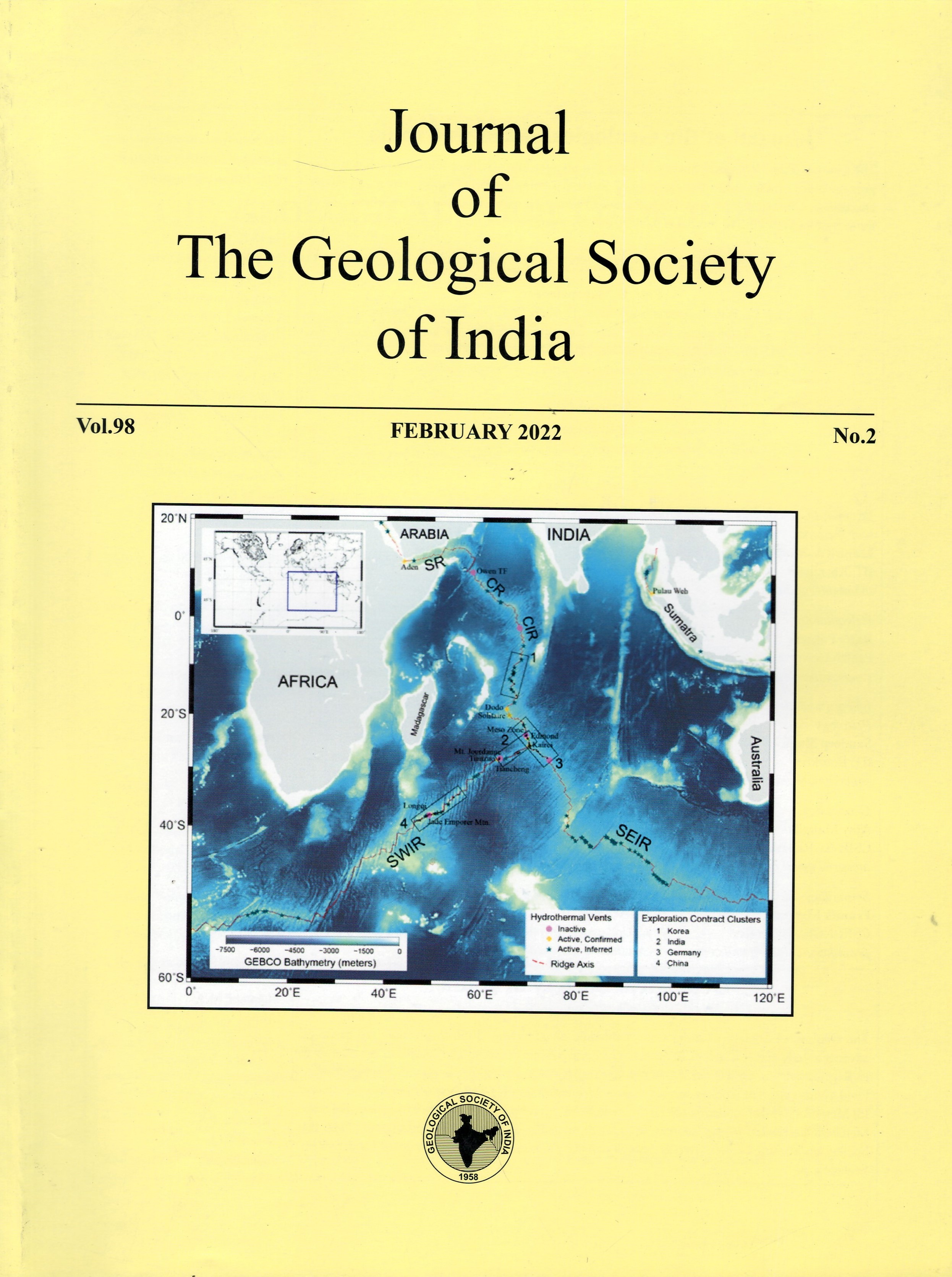An Assessment of Alternate Fertilizer Potential of Glauconite Deposits in India using Simple Beneficiation Methods
DOI:
https://doi.org/10.1007/s12594-022-1956-7Keywords:
No KeywordsAbstract
This study presents an assessment of alternate fertilizer potential of glauconite deposits in India with precise stratigraphy, dimension of the deposit, and its K2O contents for understanding their alternate potash fertilizer potential. Further, it provides simple beneficiation methods to separate glauconite from the rest of the sediments. Many of the glauconite deposits, particularly those of Precambrian age, are considerably thick and are laterally extensive. Although the content of K2O is low in the bulk rock, it is moderate to high in the glauconites. The glauconite content of the original deposits is low, mostly in the range of 10 to 20 wt%. Inexpensive and simple methods such as sieving and electromagnetic separation enhance the glauconite content up to 57 wt% in selected samples. This study is crucial for planning alternatives of conventional potash fertilizer, which are expected to be exhausted in the near future.
Downloads
Metrics
Issue
Section
Downloads
Published
How to Cite
References
Banerjee, S., Bansal, U., Pande, K. and Meena, S.S. (2016) Compositional variability of glauconites within the Upper Cretaceous Karai Shale Formation, Cauvery Basin, India: implications for evaluation of stratigraphic condensation. Sediment. Geol., v.331, pp.12-29.
Banerjee, S., Mondal, S., Chakraborty, P.P. and Meena, S.S. (2015) Distinctive compositional characteristics and evolutionary trend of Precambrian glaucony: example from Bhalukona Formation, Chhattisgarh basin, India. Precambrian Res., v.271, pp.33-48.
Rudmin, M., Banerjee, S. and Makarov, B. (2020) Evaluation of the effects of the application of glauconitic fertilizer on oat development: A two-year field-based investigation. Agronomy, v.10(6), pp.872.
Rudmin, M., Banerjee, S., Makarov, B., Mazurov, A., Ruban, A., Oskina, Y., Tolkachev, O., Buyakov, A. and Shaldybin, M. (2019) An investigation of plant growth by the addition of glauconitic fertilizer. Applied Clay Science, 180, 105178.
Rudmin, M., Banerjee, S., Mazurov, A., Makarov, B. and Martemyanov, D. (2017) Economic potential of glauconitic rocks in Bakchar deposit (SE Western Siberia) for alternate potash fertilizer. Applied Clay Science, v.150, pp.225-233.
Shekhar, S., Mishra, D., Agrawal, A. and Sahu, K.K. (2017) Physical and chemical characterization and recovery of potash fertilizer from glauconitic clay for agricultural application. Applied Clay Science, v.143, pp.50-56.
Tóth, E., Weiszburg, T.G., Jeffries, T., Williams, C.T., Bartha, A., Bertalan, É. and Cora, I. (2010). Submicroscopic accessory minerals overprinting clay mineral REE patterns (celadonite–glauconite group examples). Chemical Geol., v.269(3-4), pp.312-328.

 Tathagata Roy Choudhury
Tathagata Roy Choudhury






